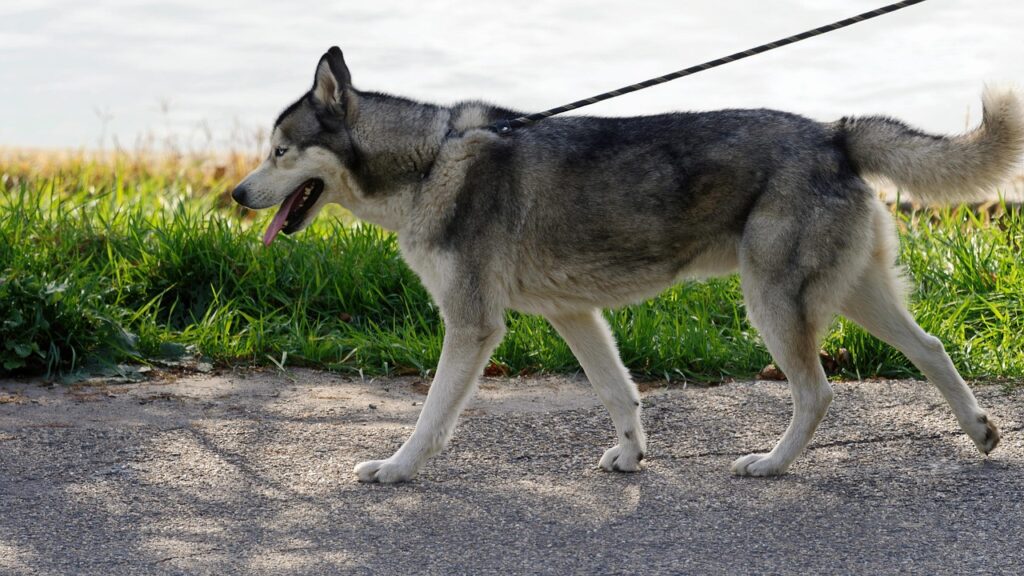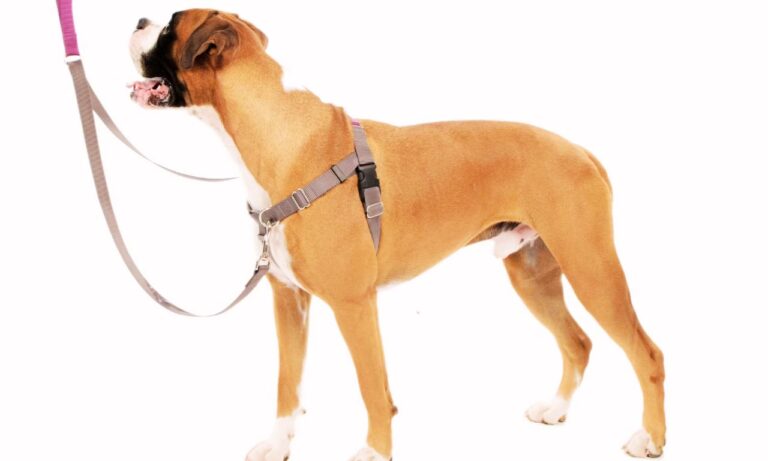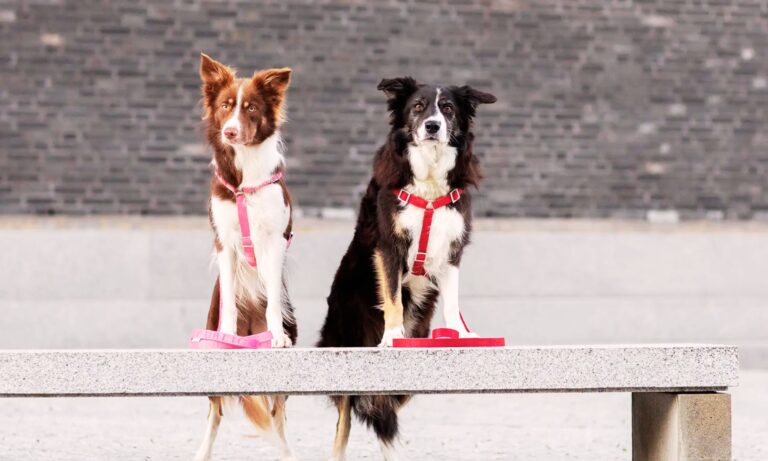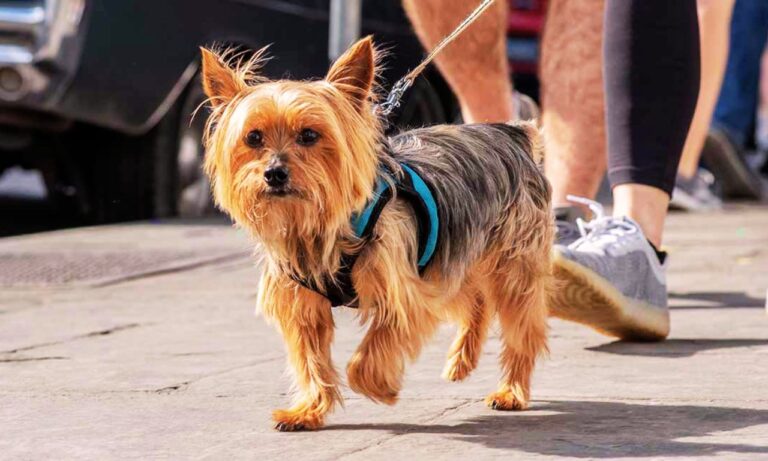When you first see a Siberian Husky, it’s hard not to be captivated by their powerful yet graceful build. Especially male Huskies — they’re the perfect balance of strength and agility, typically its Siberian Husky Weight Male 44 60 lbs when fully grown. But how do they reach that size? How fast do they grow?
Is your male Husky’s weight on track compared to the breed standard? Today, we’re diving into the full growth journey of male Siberian Huskies, real numbers, fitness expectations, and the hidden factors you need to know to keep them thriving. Understand if French Bulldogs can wear dog collars and how it affects their neck structure and overall health.
Blog Highlights
ToggleThe Standard Siberian Husky Weight Male 44 60 lbs
The American Kennel Club (AKC) recognizes the ideal Siberian Husky Weight Male 44 60 lbs range as 44 to 60 pounds (20 to 27 kilograms). Their height usually falls between 21 to 23.5 inches (53 to 60 cm) at the shoulder. These numbers aren’t random; they reflect generations of breeding Huskies to be durable, athletic working dogs capable of pulling light loads over long distances in harsh Arctic conditions.

It’s important to understand that 44–60 pounds isn’t a one-size-fits-all rule. Some male Huskies may naturally hover at the lower or higher ends depending on genetics, activity levels, and even subtle differences in lineage. What’s more crucial is proportionality — your male Husky should be strong, lean, and energetic, not underfed or overweight.
Explore the best dog collars for French Bulldogs to keep them comfortable while ensuring durability and style.
Male Siberian Husky Weight Chart (KG + Pounds)
Let’s break it down by month. Here’s a realistic male Siberian Husky growth chart, tracking average weight from puppyhood to adulthood:
| Age | Weight (lbs) | Weight (kg) |
| 8 weeks | 10–15 lbs | 4.5–7 kg |
| 3 months | 18–23 lbs | 8–10.5 kg |
| 4 months | 22–30 lbs | 10–13.5 kg |
| 5 months | 28–38 lbs | 13–17 kg |
| 6 months | 32–43 lbs | 14.5–19.5 kg |
| 7 months | 36–47 lbs | 16.5–21.5 kg |
| 8 months | 40–52 lbs | 18–23.5 kg |
| 9 months | 43–55 lbs | 19.5–25 kg |
| 12 months (1 year) | 44–60 lbs | 20–27 kg |
| 18 months | 45–61 lbs | 20.5–27.5 kg |
By 12–18 months, your male Husky should be at or very close to his adult weight, although many keep “filling out” slightly until around 2 years old. Find the best dog collars for Dachshunds that accommodate their long bodies and prevent strain on their necks.

Growth Stages: How Your Male Husky Reaches 44–60 Pounds
Huskies are fast growers at first. Between birth and 6 months, they gain weight almost weekly. A healthy male puppy can grow from around 1 pound at birth to over 40 pounds by 8 months. After that, the growth slows but continues steadily.

By the time he hits 1 year old, most male Siberian Huskies weigh between 44 and 60 pounds — but don’t panic if yours is slightly outside this bracket. Genetics, diet, and even neutering timing can influence final size.
From 12 to 24 months, Huskies bulk up slightly with muscle rather than adding more height or length. That’s why a 1-year-old male Husky might still look “adolescent” — a bit lanky — compared to the fuller, stronger dog he becomes at 2 years.
Is 44–60 Pounds Healthy for All Male Siberian Huskies?
The 44–60 pounds guideline fits most purebred, standard-sized male Huskies. However, factors like working lines versus show lines can slightly impact expected weight. Working line Huskies bred for sled racing often lean toward the lower end (44–50 lbs) for speed and endurance. Show lines might be stockier and closer to 55–60 lbs.

You’ll know your Husky’s weight is healthy if:
- You can feel (but not see) his ribs under a thin layer of muscle.
- He has a clear waist when viewed from above.
- He has a tucked abdomen when viewed from the side.
- He’s energetic, alert, and strong without tiring too quickly.
If your male Husky is under 44 pounds after 18 months, consult your vet to rule out nutritional gaps, underlying illnesses, or genetic factors. Similarly, if he’s over 60 pounds, it’s essential to ensure the weight is muscle mass, not fat, since overweight Huskies are prone to hip dysplasia and joint problems.
Weight Fluctuations: When to Worry (And When Not To)
It’s natural for male Huskies to fluctuate within 2–5 pounds throughout their lives. Seasonal weight shifts are common: many Huskies slim down slightly in summer and bulk up in winter when they’re more active in colder weather.

However, sudden, drastic changes — losing or gaining 10+ pounds within a month — aren’t normal and need quick veterinary attention. Common causes could include parasites, thyroid issues, diabetes, or injury.
Keeping a monthly weight log, especially between 6 months and 2 years, can help you catch any unusual trends early. Get insights into what is best for Dachshunds: a collar or harness for their safety, comfort, and health during walks.
Nutrition’s Role in Reaching the Ideal Weight
Feeding your male Husky appropriately from day one lays the foundation for him reaching — and maintaining — his 44–60 lb goal. Male Siberian Huskies are notorious for being light eaters compared to other breeds their size. Overfeeding “just in case” can backfire, leading to unnecessary fat accumulation.
Ideal feeding tips:
- Puppies (2–6 months): 3–4 meals a day, high-protein puppy food.
- Adolescents (6–12 months): Transition to 2 meals a day, gradually shifting toward adult formulas.
- Adults (1 year and up): 2 balanced meals daily, maintaining 22–24% protein and moderate fat.
An active adult male Husky typically needs 1,000–1,500 calories per day, depending on energy levels. Adjust portions based on exercise: a lazy day at home needs less fuel than a weekend of hiking or sledding.
Exercise Needs: How Activity Impacts Weight
A male Husky at 44–60 pounds is perfectly designed for athleticism — but if he doesn’t get enough exercise, his body (and mind) suffer.
At minimum, your adult male Husky needs:
- 60–90 minutes of exercise daily (running, hiking, agility games, mental work)
- Structured routines (they thrive on predictable schedules)
- Purposeful activities (they love jobs: pulling carts, carrying packs, advanced training)
Without enough physical and mental stimulation, Huskies become restless, destructive, and prone to unhealthy weight gain. They were bred to move — a sedentary lifestyle doesn’t suit them at all.
To discover what activities bring joy to Australian Cattle Dogs, check out this detailed guide on What Do Australian Cattle Dogs Love.
Genetics Matter: Why Some Male Huskies Are Naturally Bigger or Smaller
Genetic factors are a major reason why you’ll sometimes meet a Husky who seems outside the “official” 44–60 pounds guideline.
- Parents’ size: If your male Husky’s sire and dam were both large (closer to 60 lbs), he’ll likely trend bigger too.
- Lineage: Racing lines tend toward the leaner, lighter side. Show lines might be chunkier and slightly heavier.
- Mixed ancestry: Even “purebred” Huskies sometimes carry minor traces of Alaskan Malamute or other northern breeds, pushing their adult weight higher.
If you’re concerned about your male Husky being particularly small or large, a DNA test can offer insights into his ancestry and explain variations.
Common Weight-Related Health Concerns
Even though the 44–60 pound range sounds simple, maintaining healthy weight is crucial because Huskies are vulnerable to several issues:
- Hip Dysplasia: Overweight Huskies are at high risk.
- Arthritis: Extra pounds worsen joint strain.
- Hypothyroidism: Common after age 5, leading to sudden weight gain.
- Digestive Sensitivities: Poor diet can cause erratic weight fluctuations.
Regular weigh-ins every month (especially in adulthood) help catch early signs before they turn serious. Find out what color collar looks best on a Rottweiler to complement their bold appearance and highlight their unique features.
Real Example: How My Friend’s Male Husky Hit the Perfect Weight
My friend’s male Husky, “Kodiak,” is a perfect example. As a pup, he was tiny — barely 9 pounds at 8 weeks old. But with a balanced raw diet, daily trail runs, and steady growth checks, Kodiak hit 46 pounds at 1 year and 59 pounds by 2 years.
Now, at 4 years old, Kodiak maintains 58 pounds, with visible ribs under thick muscle, a tucked-up abdomen, and endless energy. His secret? Consistent portions, daily mental stimulation, and exercise — even if it’s just a two-hour hike every weekend combined with weekday play sessions.
Final Thoughts: 44–60 Pounds Is the Right Target, But It’s Not Everything
Reaching Siberian Husky Weight Male 44 60 lbs is a great target for male Siberian Huskies, but numbers alone aren’t the full story. What matters most is proportionality, fitness, agility, and vitality.
Your Husky’s weight journey is unique. Some hit 50 pounds early and stay there. Others grow slowly but surely. Regular vet checkups, portion control, and an active lifestyle ensure your male Husky not only falls within the right weight bracket but also leads a long, healthy life brimming with energy.
If you’re worried or curious about your male Husky’s growth, keep a monthly weight chart, track body condition (not just numbers), and enjoy the ride. Because a Husky living his best life isn’t just about hitting a scale target — it’s about that glint in his eyes as he runs free, strong, and unstoppable.
Learn what size collar for a Rottweiler is ideal by following this detailed guide to ensure a perfect fit for your dog’s comfort and safety.





